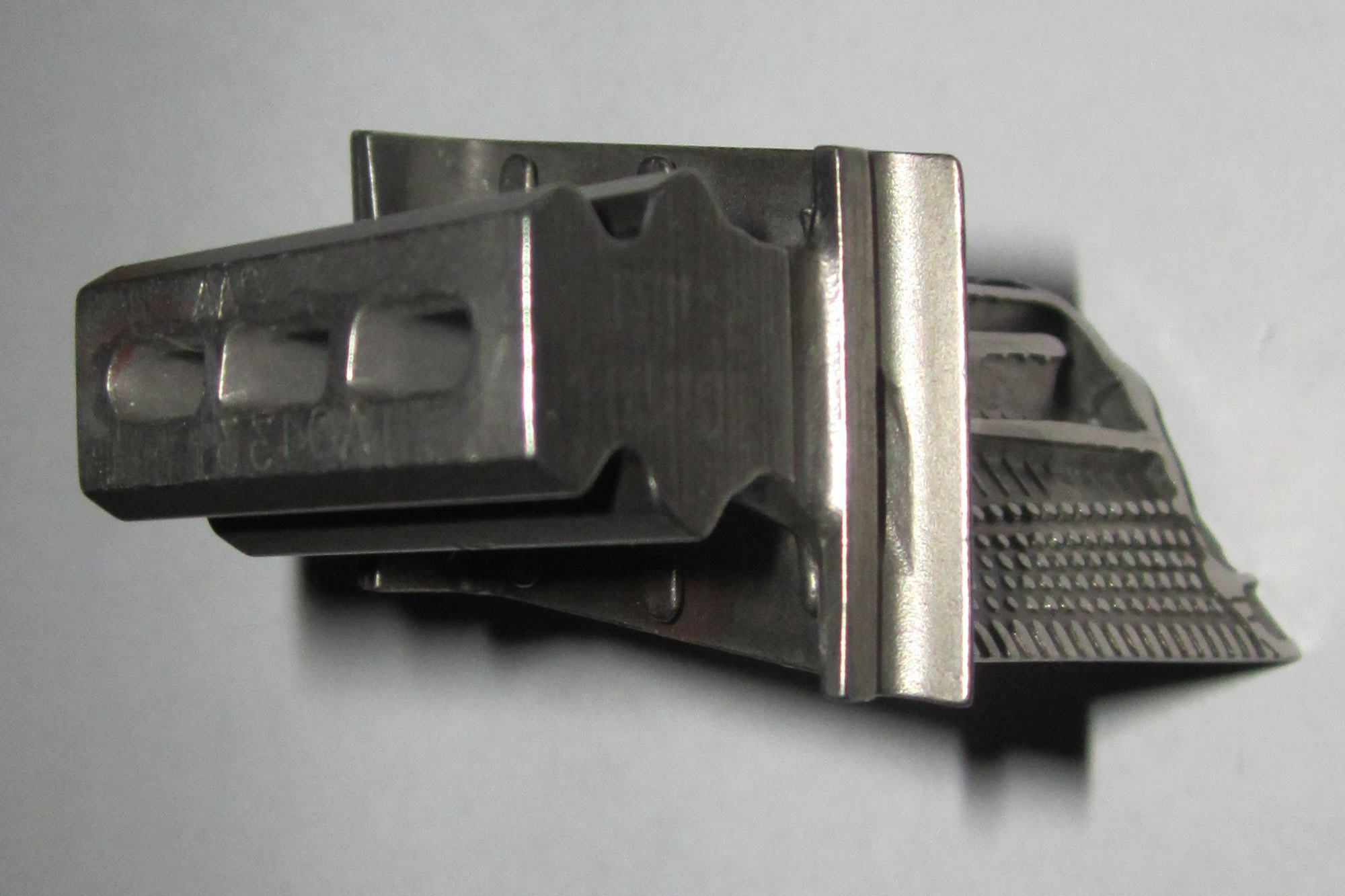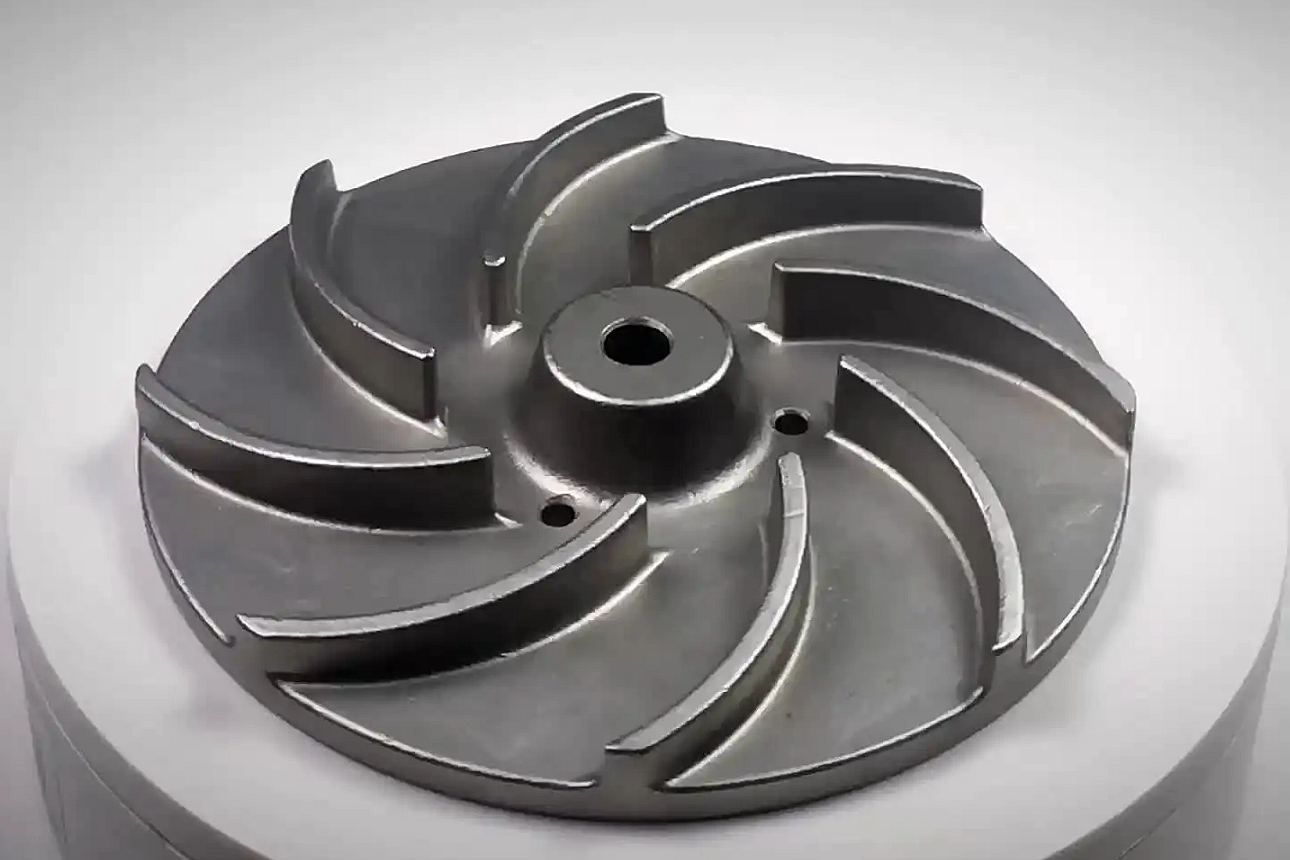Oxidation and Corrosion Behavior in Superalloys: The Role of STA
Introduction: Understanding Oxidation and Corrosion in Superalloys
Superalloys are crucial in various high-performance industries due to their excellent mechanical properties and resistance to extreme conditions. These alloys, often based on nickel, cobalt, and iron, are designed to withstand the harsh environments in aerospace and aviation, power generation, and automotive industries. However, one of the significant challenges these materials face is oxidation and corrosion, especially at high temperatures.

Oxidation and corrosion occur when metals react with oxygen or other corrosive agents in their environment, leading to the deterioration of material properties. For superalloys, these processes can form oxide scales on the surface, which can compromise the material’s structural integrity, thermal conductivity, and mechanical strength. In extreme cases, this may result in catastrophic failure of components operating in high-temperature environments, such as superalloy heat exchanger parts or jet engine components.
To combat this, it is essential to test superalloys' oxidation and corrosion behavior to predict their performance and durability. One powerful tool for assessing this is the Simultaneous Thermal Analyzer (STA), a critical technology for evaluating the thermal stability of superalloys and their resistance to oxidation and corrosion at elevated temperatures. Testing these properties ensures that parts used in critical applications, such as superalloy reactor vessel components or superalloy corrosion-resistant piping, maintain their performance even under extreme conditions.
What is Simultaneous Thermal Analyzer (STA)?
A Simultaneous Thermal Analyzer (STA) is a sophisticated testing device used to measure the thermal properties of materials under controlled heating and cooling conditions. STA combines several techniques in a single instrument, typically Thermogravimetric Analysis (TGA) and Differential Scanning Calorimetry (DSC), which comprehensively assesses a material’s thermal behavior.
In superalloys, STA simulates real-world service conditions that materials face in high-temperature environments. It measures mass changes and heat flow in response to changes in temperature, providing valuable insights into oxidation and corrosion behaviors. As superalloys are typically subjected to thermal cycles during operation, STA Checking can replicate these cycles and measure how the material’s weight, composition, and thermal properties change as they react to these conditions.
This process is invaluable for determining oxidation rates, corrosion resistance, and phase transformations in superalloys. Simultaneous Thermal Analyzer (STA) Checking involves subjecting the superalloy to increasing temperatures in an oxygen-rich or other reactive atmosphere, allowing for the monitoring of oxidation products and mass loss. This test is essential for understanding the material’s long-term stability and performance in extreme operating environments.
Using material testing with STA helps optimize the design and application of superalloy components that are critical to industries such as aerospace, power generation, and automotive.
The Function of STA in Evaluating Superalloys
The primary function of STA in superalloys is to evaluate the material's oxidation resistance and the formation of corrosion products. Oxidation is a complex reaction where the metal reacts with oxygen to form oxide layers, which can either protect the material or degrade its properties. STA testing helps to understand how these reactions progress and how the material behaves over time. It is an integral part of the vacuum heat treatment process, designed to enhance superalloy components' mechanical properties.
In STA, the temperature of the superalloy gradually increases under a controlled atmosphere. As the temperature rises, oxidation may occur, and the mass of the superalloy changes. The STA can measure these mass changes with high precision, identifying when oxidation starts and the rate at which it progresses. By tracking these changes, STA can provide valuable data on how long the superalloy will maintain its structural integrity before oxidation significantly affects its performance. This is particularly valuable in processes like vacuum investment casting, where ensuring material integrity and minimizing defects is crucial.
Moreover, STA allows for analyzing other high-temperature behaviors, such as forming new phases or degrading existing phases. This data is crucial for determining the superalloy’s suitability for specific high-temperature applications where prolonged exposure to oxidative environments is inevitable. Manufacturers can make informed decisions about material selection, heat treatment processes, and coating applications that may improve oxidation resistance through this testing. Such insights help optimize the performance and reliability of superalloy components in critical industries like aerospace and energy.
Superalloy Parts that Benefit from STA Testing
Superalloy components across industries, including superalloy castings and superalloy precision forging, benefit significantly from STA (Simultaneous Thermal Analysis) testing. STA helps evaluate material behavior in environments where oxidation and corrosion are critical, providing valuable insights into how superalloy parts will perform under extreme conditions. This ensures the longevity and reliability of components used in aerospace, energy generation, and defense applications.
Superalloy Castings
Superalloy castings like turbine blades and combustion chambers are exposed to extreme temperatures and high-velocity gases in aviation and power generation industries. STA testing is essential for evaluating how these superalloy castings will behave over time when subjected to harsh oxidizing and corrosive environments. It helps ensure cast components maintain their mechanical properties, preventing premature degradation and optimal performance in demanding applications.
Forging Parts
Forged superalloy components, such as superalloy turbine discs and rotors, endure high mechanical stresses and elevated temperatures. STA testing is invaluable in understanding how these superalloy forging parts perform over prolonged exposure to oxidizing environments. It helps ensure the reliability and durability of these parts in critical applications, optimizing their resistance to oxidation and corrosion while maintaining high performance under extreme conditions.
CNC Machined Superalloy Parts
Many superalloy components, including superalloy CNC machined parts, undergo precise machining after forging to achieve tight tolerances. STA testing is essential for evaluating how machining affects the oxidation resistance of these parts. The machining process can alter surface structures, making parts more susceptible to corrosion. STA helps manufacturers assess these changes and tailor post-processing treatments to optimize corrosion resistance and ensure long-term performance in high-stress environments.
3D Printed Superalloy Parts
The 3D printing process for superalloy components introduces unique challenges, especially related to material behavior under extreme conditions. The rapid cooling and complex thermal gradients in additive manufacturing can result in non-optimal microstructures that impact oxidation and corrosion resistance. Superalloy 3D printed parts undergo STA testing to simulate high-temperature conditions and evaluate how these parts will perform in real-world applications. This testing ensures that 3D-printed components are suitable for demanding aerospace and power generation applications.
STA Compared with Other Testing Processes
While STA (Simultaneous Thermal Analysis) is highly effective in evaluating oxidation and corrosion behaviors, it is often used with other testing methods to understand material performance comprehensively. STA focuses on analyzing thermal stability and mass changes in superalloys, but it doesn't capture the microscopic structural changes of the material. Tools like X-ray inspection and Scanning Electron Microscopy (SEM) provide a detailed view of the microstructure. While STA provides information on the overall thermal behavior, X-ray and SEM techniques offer a closer look at the crystalline structure and surface morphology at the microscopic level.
Tensile testing and Coordinate Measuring Machines (CMM) are traditional methods used to evaluate superalloy components' mechanical properties and geometrical accuracy. These tests primarily focus on the material's strength, flexibility, and dimensional precision. However, they do not directly assess oxidation and corrosion behaviors, areas where STA excels. Combining tensile testing and STA ensures structural integrity and long-term durability in high-performance applications.
Water immersion ultrasonic testing and X-ray CT scanning are non-destructive testing methods that provide information on the internal structure and potential defects in superalloy components. These techniques are valuable for detecting cracks or voids that may develop due to thermal stresses or fatigue. However, they do not directly assess oxidation and corrosion. STA complements these methods by providing insights into how oxidation and corrosion affect the material's performance under high-temperature conditions.
STA is a unique and powerful tool because it targets explicitly superalloys' thermal and oxidative behaviors, which cannot be fully understood through mechanical testing or non-destructive techniques alone. Combining STA with methods like X-ray and SEM ensures a complete understanding of the superalloy's performance in critical applications for a comprehensive material evaluation.
Industry Applications of STA in Superalloy Parts
STA (Simultaneous Thermal Analysis) plays a vital role across various industries, helping ensure the longevity and reliability of superalloy components used in critical applications. By assessing the behavior of superalloys under both temperature and oxidative conditions, STA enables manufacturers to optimize material properties and ensure the performance of components in extreme environments.
Aerospace and Aviation
Superalloys are extensively used in turbine engines, combustors, and exhaust systems in the aerospace and aviation industry. STA testing helps assess the performance of these components in extreme environments, where high temperatures and oxidative conditions are common. For example, turbine blades in jet engines are exposed to temperatures exceeding 1,000°C, and STA provides insights into how these components will resist oxidation and maintain their structural integrity, ensuring the safety and reliability of the aircraft.
Power Generation
In power generation, superalloys are used in gas turbines, steam turbines, and heat exchangers to withstand high temperatures and corrosive gases. STA is essential for evaluating oxidation resistance and critical in preventing material degradation over time. Superalloy components in power plants need to maintain their strength and thermal conductivity to ensure efficient energy production. For example, superalloy heat exchanger parts must resist oxidation to preserve their performance under high-heat conditions, enhancing energy efficiency.
Oil and Gas
The oil and gas industry relies heavily on superalloys for critical components such as pumps, valves, and pipes that operate under high-pressure and high-temperature conditions. STA testing helps assess the material's ability to resist corrosion from aggressive chemicals and prolonged exposure to high temperatures. This ensures these parts can operate safely in challenging environments, such as deepwater drilling or high-pressure pipelines. For instance, superalloy pump components must withstand extreme conditions to maintain operational integrity and prevent failure.
Military and Defense
In military and defense applications, components such as jet engine parts, missile systems, and armor rely on the performance of superalloys under extreme conditions. STA testing ensures that superalloy components will not fail prematurely due to oxidation or corrosion, which could lead to catastrophic failures in defense applications. Superalloy parts used in missile segment production are particularly vulnerable to high temperatures and oxidative stresses, so STA testing is critical to confirm their durability in combat scenarios.
Marine and Shipbuilding
Superalloys are extensively used in marine and shipbuilding for components like exhaust systems, propulsion parts, and heat exchangers. STA testing ensures that these parts can withstand the corrosive saltwater environments and high temperatures found in marine applications, maintaining performance and safety. In marine applications, components like superalloy naval ship modules are exposed to extreme mechanical and environmental stress. STA helps confirm their resistance to oxidation and corrosion over long periods of service.
By leveraging STA testing across these industries, manufacturers can improve the reliability and longevity of superalloy components, ensuring that they can perform efficiently under the most demanding conditions.
FAQs
What is the role of STA in evaluating oxidation and corrosion in superalloys?
How does STA compare with traditional testing methods like X-ray or tensile testing?
Why are 3D printed superalloy parts particularly tested with STA?
What industries benefit most from STA testing of superalloy components?
How does STA help improve the design and performance of high-temperature alloy parts?



